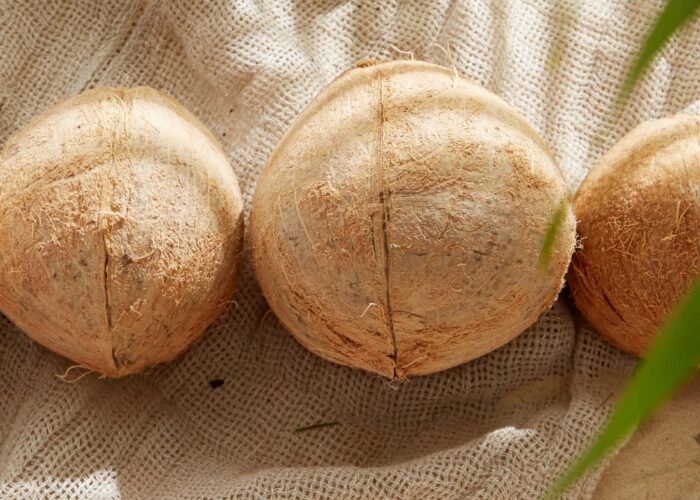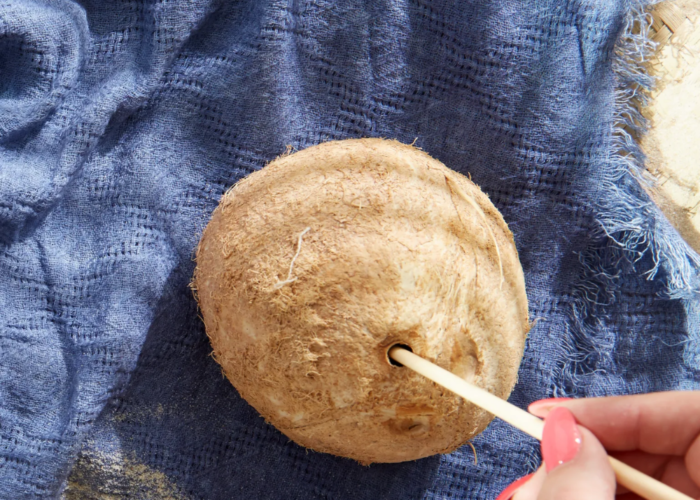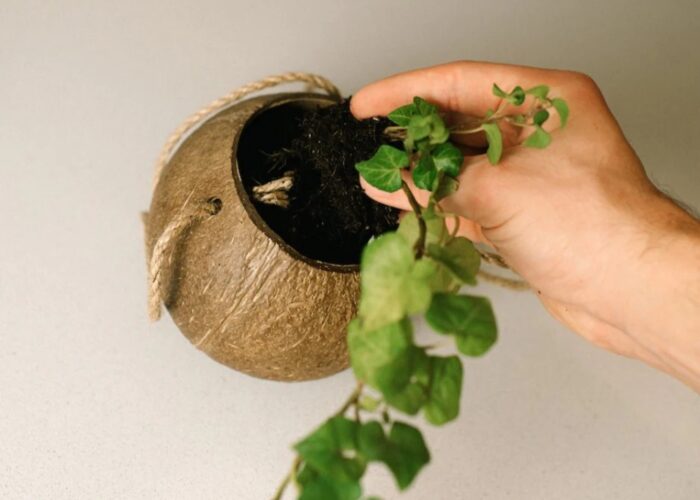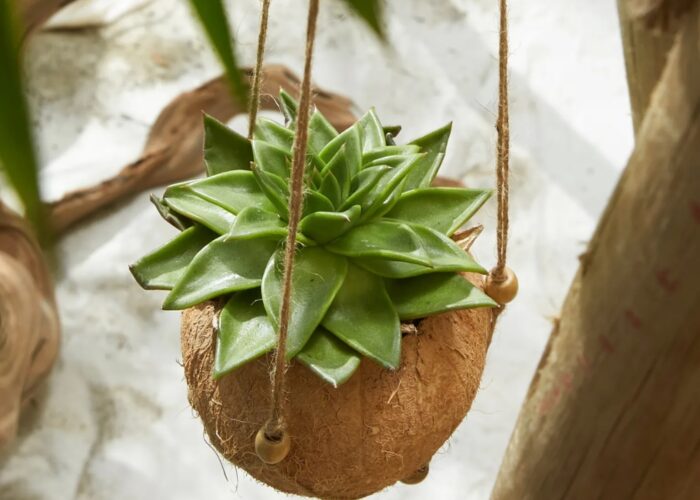Looking to add a touch of natural charm to your garden or home decor? Learn how to make a coconut shell planter with this simple and eco-friendly DIY project. Transforming a coconut shell into a planter not only adds a rustic aesthetic but also repurposes a natural material that might otherwise go to waste. With just a few easy steps, you can create a unique and sustainable home for your favorite plants. Let’s dive into how to make a coconut shell planter and bring a bit of tropical flair to your space!
1. How to make a coconut shell planter?
Creating a coconut shell planter is a fun and environmentally friendly way to add some greenery to your home. Here’s a simple guide on how to make one:
Materials:
- Coconut shell
- Drill with a small drill bit
- Potting soil
- Small plants or seeds
- Optional: Paint, varnish, or decorative embellishments
Step-by-step:
Step 1: Select a Coconut Shell
Choose a clean and dry coconut shell that’s intact and not cracked. You can often find these at grocery stores or local markets.

Step 2: Prepare the Coconut Shell
Using a drill with a small drill bit, carefully create drainage holes in the bottom of the coconut shell. These holes will prevent water from pooling at the bottom and help your plants thrive.

Step 3: Decorate the Shell (if desired)
Get creative with your coconut shell planter by painting it, varnishing it, or adding decorative embellishments. Let your imagination run wild to match your home decor or personal style.
Step 4: Fill with Potting Soil
Once the shell is prepared, fill it with potting soil, leaving enough space at the top for your plants or seeds. Make sure the soil is evenly distributed and firmly packed.

Step 5: Plant Your Greenery
Carefully plant your chosen plants or seeds into the potting soil, following the instructions for the specific plants you’ve selected. Be gentle to avoid damaging the roots. After planting, water your coconut shell planter thoroughly, ensuring the soil is evenly moist but not waterlogged.
Step 6: Enjoy Your Coconut Shell Planter
Once your plants start growing, sit back, relax, and enjoy the natural beauty of your coconut shell planter. Admire how it adds a touch of tropical charm to your home while also being a sustainable and eco-friendly choice.

With these simple steps, you can easily create your own coconut shell planter and bring a bit of greenery and natural beauty into your living space.
2. Coconut shell planter ideas
Coconut shell planters offer a unique and eco-friendly way to showcase your greenery while adding a touch of tropical charm to your space. Here are some creative ideas for using coconut shells as planters:
2.1 Coconut Shell Hanging Planters
Transform coconut shells into hanging planters by attaching sturdy strings or ropes to their tops. Hang them from ceilings, pergolas, or tree branches to create a whimsical and natural display of cascading plants. Consider using trailing plants like pothos, ivy, or spider plants for a stunning effect.
2.2 Coconut Shell Painting Planters
Get artistic with your coconut shell planters by painting them in vibrant colors or intricate designs. Use acrylic paints or waterproof markers to create patterns, floral motifs, or even intricate mandalas. These painted coconut shell planters will not only showcase your plants but also add a pop of color and personality to your space.
2.3 Suspended Coconut Shell Planters
Create an eye-catching display by suspending coconut shell planters at different heights using macrame hangers or decorative chains. Mix and match plant sizes and varieties for visual interest, and hang them near windows or in cozy corners to create a natural oasis indoors.
2.4 Mini Succulent Garden
Turn coconut shells into adorable mini succulent gardens by filling them with well-draining succulent soil and planting a variety of small succulents. Succulents thrive in shallow containers, making coconut shells the perfect choice for creating charming succulent arrangements. Place these mini gardens on windowsills, desks, or coffee tables for a touch of greenery in any room.
Whether you opt for hanging planters, painted creations, suspended displays, or mini succulent gardens, coconut shell planters offer endless possibilities for adding natural beauty and creativity to your home or garden décor. Get inspired and let your imagination soar as you explore the wonderful world of coconut shell planters!
3. FAQs
3.1 Which plants can be grown in coconut shells?
Several types of plants thrive in coconut shells due to their excellent drainage and suitability for shallow containers. Succulents like echeverias and jade plants are popular choices, as are culinary herbs such as basil and parsley. Ferns, spider plants, orchids, and cacti also flourish in coconut shell planters, each adding its own unique beauty to indoor and outdoor spaces. With proper care, these plants will thrive in their coconut shell homes, bringing a touch of natural elegance to any environment.
3.2 How long do coconut planters last?
The lifespan of coconut planters can vary depending on factors such as environmental conditions, maintenance, and the quality of the coconut shell itself. Generally, well-maintained coconut planters can last anywhere from 1 to 3 years or even longer. However, exposure to moisture, sunlight, and other elements can cause the coconut shell to degrade over time. Regular inspection, cleaning, and proper care can help extend the lifespan of coconut planters, ensuring they remain functional and aesthetically pleasing for as long as possible.
3.3 Can coconut shell planters be used outdoors?
Yes, coconut shell planters can be used outdoors. However, their durability and lifespan may be influenced by outdoor environmental factors such as exposure to sunlight, rain, and fluctuating temperatures. To ensure the longevity of coconut shell planters outdoors, it’s essential to provide proper drainage, protect them from extreme weather conditions, and periodically inspect and maintain them.
If you have any further questions, don’t hesitate to send thanhcongcraft an email us at info@thanhcongcraft.com or message us at WhatsApp: +84967485411. Hope to serve you soon! Best regard!


